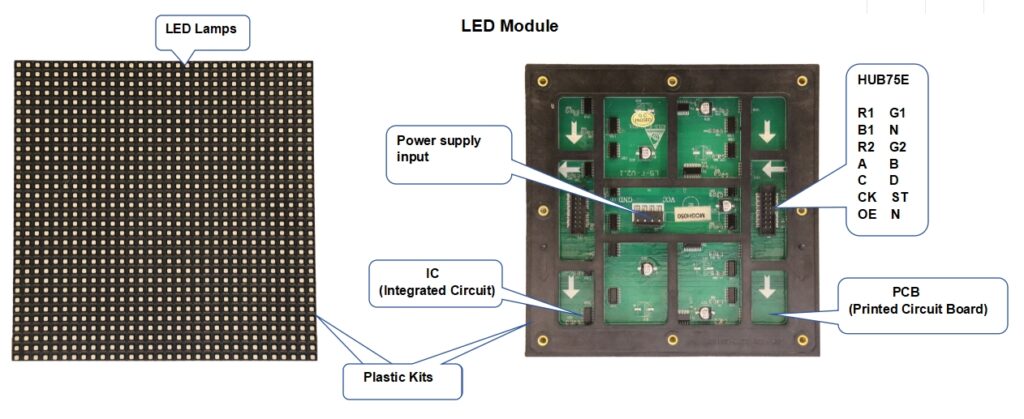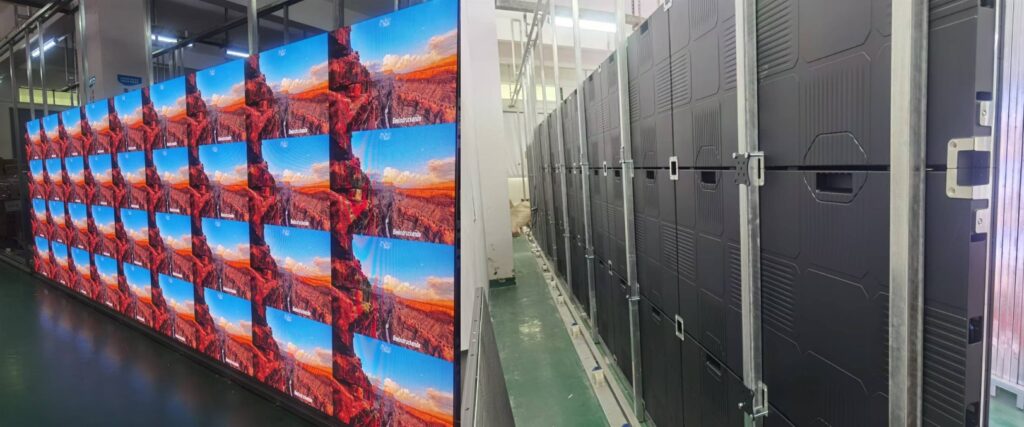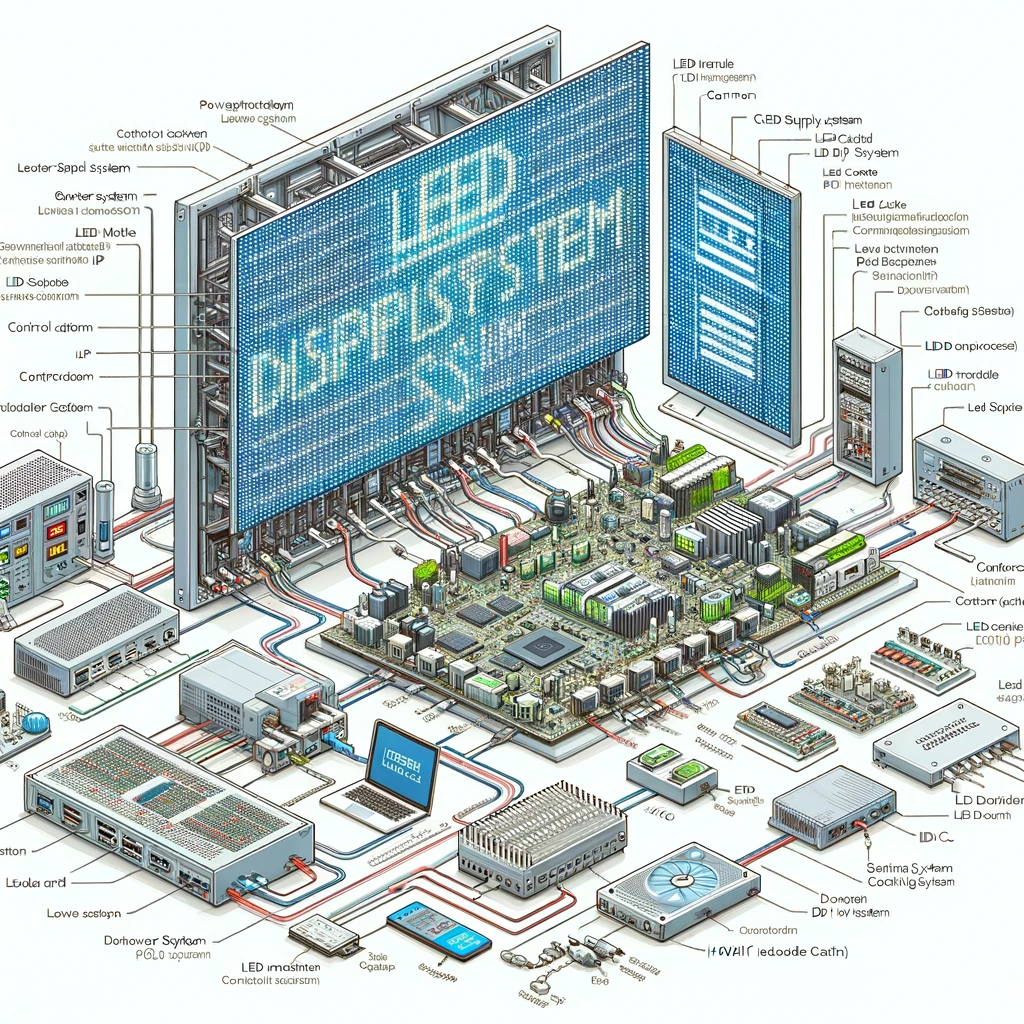When considering an LED display system, what are the key components and how do they work together? Understanding the architecture of an LED display is essential for those involved in its installation, operation, or maintenance. In this blog, we’ll explore the various parts and the overall system architecture, giving you a clearer picture of how these advanced systems function.
1. What Is an LED Module?
An LED module, often called a “lamp board,” is the smallest removable part of an LED display. Each module is a self-contained unit comprising several essential components:
- LED Lamps: The primary light-emitting elements that produce the visual output.
- PCB (Printed Circuit Board): The backbone that holds all components together and ensures proper electrical connections.
- Driver IC (Integrated Circuit): Manages the current to the LED lamps, ensuring consistent brightness and performance.
- Decoder IC: Converts signals from the control system into actionable commands for the LED lamps.
- Resistors and Capacitors: Regulate current and voltage within the module.
- Plastic Kits: Provide protection and structural support, ensuring durability and ease of installation.

2. What Components Are Included in an LED Cabinet?
Multiple LED modules are systematically arranged to form an LED cabinet. The cabinet acts as the building block of a larger LED display screen, ensuring seamless display when assembled with other cabinets.
Cabinet Structure: The framework that holds all other components together.
LED Modules: The core display elements.
Power Supply: Provides necessary electrical power to the modules.
Receiving Card: Receives data from the sending card and directs it to the appropriate LED modules.
Wiring: Connects all components within the cabinet, ensuring signal and power transmission.

3. What Makes Up the LED Screen?
The LED screen is the final assembly, consisting of multiple LED cabinets joined together to create the full display. The size and resolution of the screen can vary based on the number of cabinets used, creating the visual content visible to the audience.

4. How Does the Control System Work?
The control system serves as the brain of the LED display. It includes a control computer that sends data to the LED screen through various connections:
- USB Cable or Ethernet Cable: Facilitates direct data transfer between the control computer and the sending card.
- HDMI/DVI/DP Cable: Carries the visual data from the computer to the sending card, which then processes it for the LED screen.
- Sending Card (Controller): A crucial component that converts the video signal from the computer into a format that the LED screen can understand.

5. What Role Does the Power Supply System Play?
A robust power supply system is vital for powering the LED screen. This system ensures that each component of the display receives the correct voltage and current for optimal performance.
6. Why Is a Cooling System Necessary?
Due to the heat generated by the LED lamps and other electronic components, an efficient cooling system is essential. This system prevents overheating, ensuring the longevity and stable performance of the LED display.

